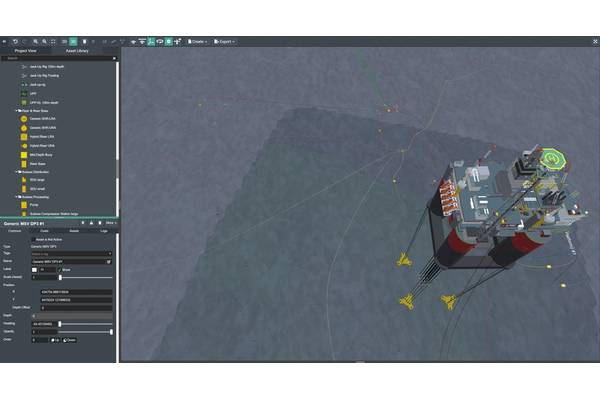

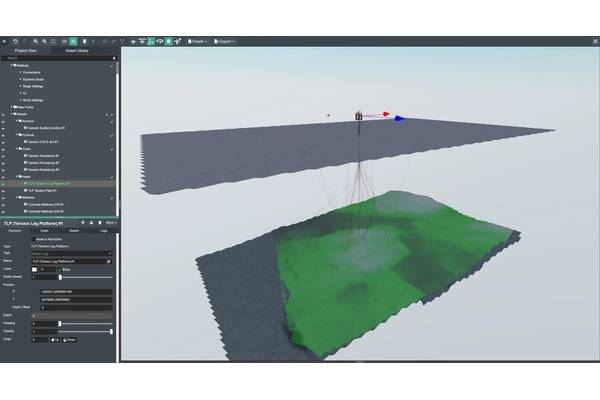
Oil and gas is achieving next-generation results in design, operation and forecasting by integrating digitalization both within companies and across industry.
True, cutting-edge digital transformation of the oil and gas industry requires widespread integration of the technology and regular, ongoing application of all that this revolutionary way of working can offer.
Leading companies are of course already embracing the advances made possible by the digital sector and the sorts of solutions provided by innovators.
The biggest and most productive impacts, however, will only come with industry-wide buy-in to next generation digitalization: virtual replicas of field infrastructure within a data-rich matrix, offering a new way to manage complex projects and achieve lower costs of operations, increased worker productivity and reduced development spending.
Benefits can be multiplied by greater collaboration both within companies and across the industry and will apply throughout project lifecycles including conception, realisation, asset management and decommissioning.
A meaningful, sector-wide shift to all that digital offers will unlock value at every stage of development.
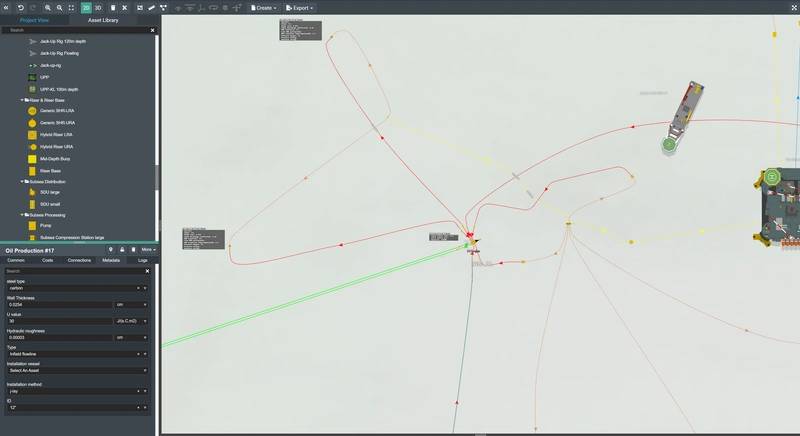 Image Courtesy FutureOn
Image Courtesy FutureOn
A next-generation toolboxBig data has transformed oil and gas; thousands of data points a minute, a universe of information created every hour, often spread across multiple databases, spreadsheets and servers. The data holds lessons to be learned and applied but, because of its sheer volume and siloed storage, often escapes proper analysis and critical assessment.
Digital twin technologies including FutureOn's FieldTwin Design (previously known as FieldAP) and FieldTwin create visualizations based on data that is otherwise underutilized, lost and/or forgotten. The focus is on creating an information-rich geospatial environment through 3D modelling – much of which comes from gaming technology – that provide a real-life, immersive subsea experience from the desktop.
GIS mapping data, bathymetry, topography, existing infrastructure and other physical constraints are combined with proprietary information such as reservoir, well and drilling data to create the visualizations of potential field layouts.
Metadata can then be introduced based on cross-industry standards. The result, built using FieldTwin API technology, is a virtual twin of a future project that can be utilized in planning and also allows for the creation of meaningful production and operational forecasts and integrity management over time.
However knowing where to start with digital twin applications, and how far to run with the technology, can be problematic. A range of approaches have been taken by some of the world's leading oil and gas companies, often focused on small solutions which yield significant results, rather than requiring large CAPEX expenditures.
A focused, precise digitalization strategy based on existing work processes can transform productivity, improve risk management, fuel collaboration and streamline and optimise data management.
However it must be part of a journey, rather than just a daytrip. Extensive and consistent deployment at company and industry level – based on a streamlined user experience – is far better than random or occasional adoption, which risks a slide back into traditional, less efficient working practices.
Collaboration and transparency are key to this mission; FutureOn has to that end brought together digital leaders from across oil and gas in a sharing and learning platform focused on digital use and experiences.
Productive discourse, based on the latest digital twin technology, will fuel future development.
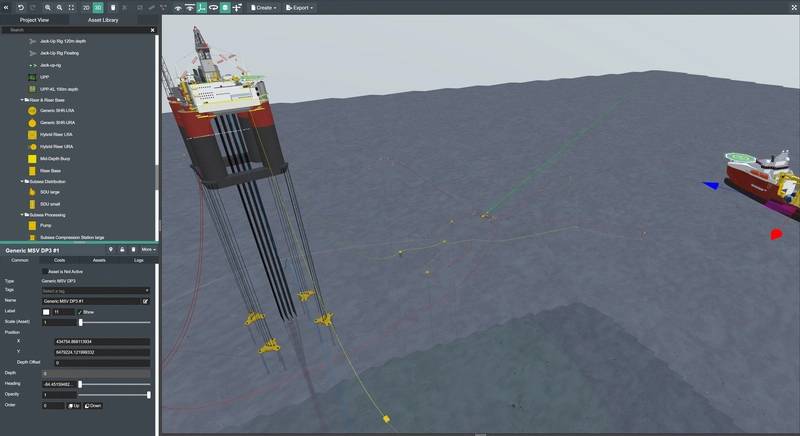 Field layout 3D. Image courtesy FutureOnBuilding a digital twin ecosystemReal-life applications of digital twin technologies take a variety of shapes, depending on factors including requirements in the field, company outlook, and traditional approaches to data.
Field layout 3D. Image courtesy FutureOnBuilding a digital twin ecosystemReal-life applications of digital twin technologies take a variety of shapes, depending on factors including requirements in the field, company outlook, and traditional approaches to data.
For one supermajor, the solutions from FutureOn are part of a bigger picture approach to the next generation of development in which FieldTwin Design and FieldTwin represent "a fundamental cog in building a digital twin ecosystem for subsea".
This approach is already being used for field design including flowline routings etc, and will ultimately be embedded through the lifecycle of subsea projects across the company portfolio, adding "massively" to the value proposition of the technology – value that will only grow with increasing maturity.
It will in time extend from planning through decommissioning, and from onshore projects through deepwater deployment and into refineries as well as new energy and renewables.
Integration with existing systems, including GIS data platforms, is central to success: the higher the quality of the data, the more up to date, the greater the value of the resulting digital twin.
For the super major, there were five main requirements for the digital twin link between an inhouse, primarily 2D geo-spatial package and FieldTwin. These covered display of bathymetry, existing infrastructure and map services data such as licence boundaries and field locations. It also included reverse functionality: use of FieldTwin subsea layout designs and associated metadata within in-house systems.
API systems provided the architecture necessary to achieve the desired level of integration, and results in both directions were achieved in "days and weeks", rather than over longer periods. On map services, "we were incredibly surprised at how quickly and easily we were able to access this information in our application, it has been a real positive success story", said the customer.
Development is ongoing on integration of the data covering existing infrastructure. The FutureOn specialist GIS team has identified a solution using ESRI open standards that should facilitate full functionality later this year. Bathymetry, due to the complexity of the information stored inhouse, is typically a one-off upload rather than a linked element.
On the reverse functionality, field designs created in FieldTwin Design were translated into 2D and 3D layouts for the inhouse system, "really showing the integration of the two applications".
Further digitalization is underway, including integration with FutureOn partner Bentley that will enable access to engineering documentation and deliverables. Data created in wells software from Halliburton and a dynamic multiphase flow package from Schlumberger is waiting in the wings to facilitate real-time and fast-flow assurance modelling.
"We are in the early stages of digital twin maturity; we are at the descriptive and informative stage," said the user. "As we move forward we will be looking to link in more powerful predictive AI and data analytics software."
That, he added, will push digital twin ecosystems to the next level.
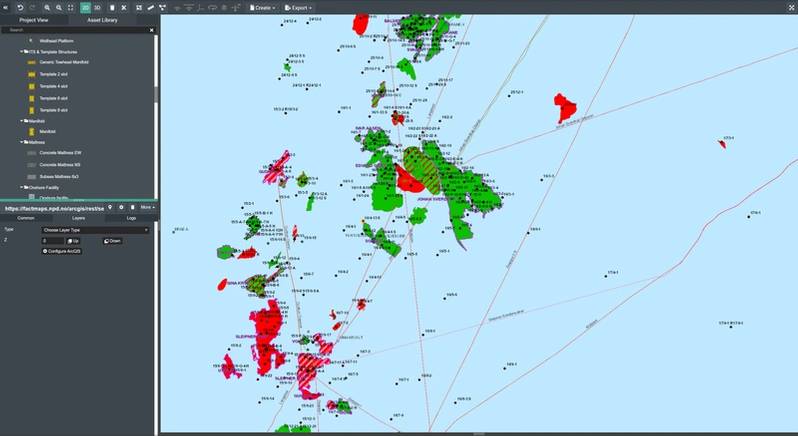 Image courtesy FutureOn
Image courtesy FutureOn
Making light work of brownfield extensions
Brownfield oil and gas projects pose a particular challenge to traditional field design due to the complexities of working around, and integrating with, existing infrastructure. A diversified national energy company seeking to establish a forward-focused position for developing and delivering such projects adopted a digital twin strategy using FieldTwin Design and FieldTwin.
The goal was to create a digital replica of the existing environment with all data stored in a single location: an 'as built' datasheet including the correct location, coordinates and equipment as well as associated metadata. New tiebacks would then be built onto of this existing field digital twin.
This provides an overview of the entire subsea development area and creates a window into geohazards, specific distances, routing of pipelines and – for planned installations – how congested the field could be, the corridor between pipelines and any spare connections.
A three stage process is required. First, proprietary inhouse materials including the native field layout CAD, subsequent revisions, bathymetry, equipment datasheets, approach drawings etc are gathered, with any gaps in the knowledge base potentially filled from other sources.
A mix of generic and specific equipment specifications are used, depending on links with contractors and/or future supply options.
All of this is then input into FieldTwin Design to establish the 3D digital model, with associated data behind, including routing of umbilicals and flowlines, hydraulic/electrical flying leads etc. Finally, the architecture and geography is populated with company metadata to complete the digital twin.
The latter is currently a manual process but will in the course of 2021 be upgraded following development, alongside FutureOn, of a tool that can both read and export data from a pre-defined template created inhouse.
After the digital brownfield model is created, a series of data checks are undertaken to ensure accuracy. These cover everything from well coordinates, headings and tags, to the precision of 2D/3D views, details of connections, and the reliability of metadata.
The energy company is extending the digital twin concept to all of its assets, both brownfield and greenfield. Depending on the size of the project, it can take a few hours to create a digital twin for a small layout – for instance four wells and two manifolds – while something larger will require two or three people in different areas collaborating around the single model.
Current practice at the user is to deploy digitalization in the early concept and FEED stages but that is likely to change: "We have some ideas of where we want to go in the future. Basically the main concept and company view . . . is to make this tool helpful for execution, operation, asset integrity and so. Even for decommissioning.
"We can implement this for all those stages."
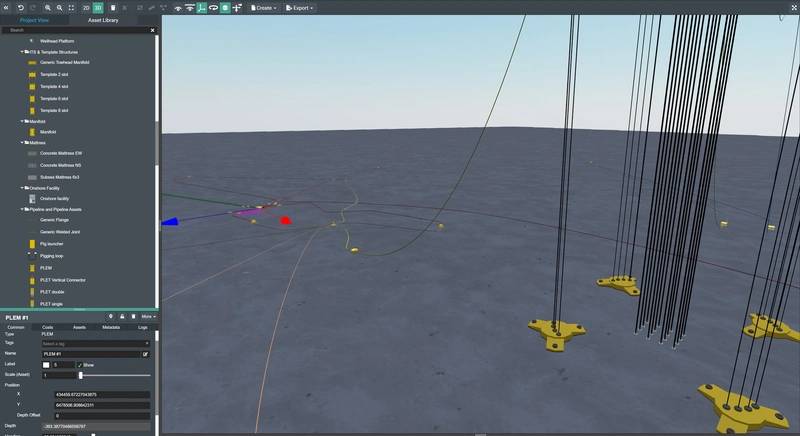 Subsea 3D. Image courtesy FutureOnNext-generation Production Modelling
Subsea 3D. Image courtesy FutureOnNext-generation Production Modelling
The end goal of digital twin technology can be described in increased efficiencies of time and cost, but ultimately it is about improved results.
Decisions taken in the earliest stages of subsea development have a particularly large impact on operations, which is what makes the ability to link layouts to accurate production modelling so crucial.
One national North Sea operator building cloud-based, multi-application digital twin capability has put FutureOn at the heart of transformational company-wide efforts; the goal is to establish full integration with both third-party and inhouse software systems.
Under the developing concept, for which major milestones are scheduled to be achieved this year, subsea scenarios established in FieldTwin Design will be exported into a separate digital software package already populated with the relevant data necessary to establish a production forecast.
Workflow inputs, scenario setups, models and configurations are used – in a fully automated process – to produce the forecast, which in addition to being stored in the dedicated software package is also fed back into the FieldTwin Design system for access.
The latter allows for graphics of results across a number of profiles: production flowrates, temperature and pressure.
An initial phase of the project was based on a simplified network of pipelines to illustrate the process of moving straight from FieldTwin Design to populating the hydraulic network. "You are then able to run export results, where you then can connect up the hydraulic network to the clampers or a tank model, or to a more complex modelling using clips and dynamic production analysis," said the company.
Going forward, the integration will be expanded to include: reservoir representations, prosper models for wells, and booster options such as pumps, compressors and separators. User interfaces will be optimised, and evaluations are ongoing on some non-metadata elements. Cloud compatibility, the focus of an ongoing shift across oil and gas, is part and parcel of the digital twin approach.
When complete, the production modelling approach will be able to define all required input metadata, build the relevant models, run calculations on demand, and export results for analysis and reference.
Well models will be based on template designs stored in a shared library and include a minimum level of data: inflow, equipment, options and PVT. Solutions must be generic enough to cater for a wide variety of production and artificial lift scenarios including; oil, condensate, gas, gas-lift, ESPs, water and gas injection.
The North Sea company is proving the FieldTwin Design concept as part of a longer-term ambition to extend digital twin solutions to operational assets. The technology is already used in topside processing and drilling. Further value will come in time through extension of the integration process into other areas: capex analysis, carbon efficiency calculators, concept reports.
"This is where we want to get," said the customer. "A tool that can give us an efficient concept selection and come up with the best concept in respect of value and CO2 footprint."
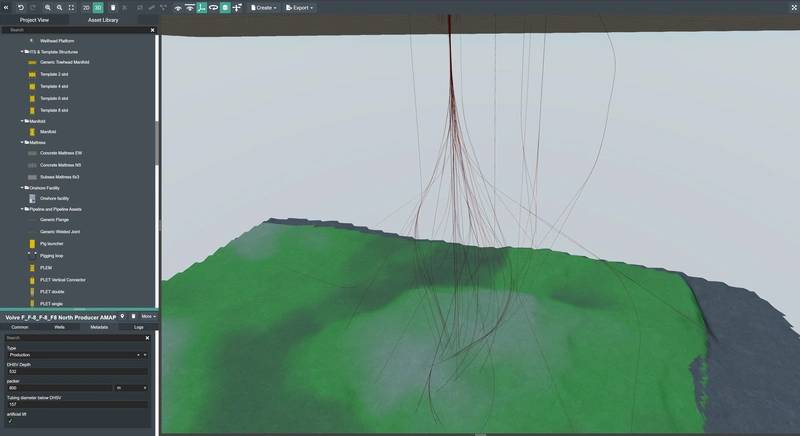 Image courtesy FutureOn
Image courtesy FutureOn
The Future of Metadata
The effectiveness of any digital twin technology, and so its uptake across industry, is only as good as the building blocks behind the 3D visualizations – and FutureOn recognises that among its client base, metadata is perhaps the most important. Creating an accepted standard for this crucial information, in an aligned and transparent fashion, will facilitate the next steps in the wide-ranging transformation promised by digitalization.
Generic metadata is certainly already available but many users and operators have opted to develop their own datasets for their own use cases. So you can of course have pre-set values but you can also modify for a specific field application, for example increasing the equipment maximum operating pressure for an HPHT (high pressure, high temperature) well.
This is key information and it is essential to represent that data in the right units and aligned with the right standard. Within the FieldTwin application, this information is stored in an entry standard format known as JSON, which allows other user applications – via API – to put the data to work.
Metadata within the application is fully configurable; it can be modified, aligned and mapped to support any existing standard as established by inhouse or third party systems. FutureOn is a silver member of the open subsurface data universe, or OSDU, a group developing an open energy data platform.
The initiative was originally created, as the name suggest, for subsurface applications but has now widened its horizons with the goal of creating a comprehensive open data platform that in addition to oil and gas also includes wind farms and other renewables.
Other collaborations include joint industry project JIP33 which is developing standard equipment specifications and JIP36 – also known as CFIHOS – which is building the an oil and gas reference data library (RDL). The latter can be used to create, on a project by project basis, an Asset Data Library (ADL) to be used for a digital twin. The RDL will also provide a metadata set designed to speed the exchange of data, and make handover quicker, easier and safer for operators, contractors, manufacturers and suppliers.
Additional bodies in the mix include DISC, the digital transformation group within the International Association of Oil and Gas Producers.
"These standards will help with the typically frustrating handover between project phases, and into operations," said FutureOn customer success manager Gregor Deans. "So we have a continuous quality set of metadata throughout the life of a project – really the core of the digital twin."
Under the next iteration of FieldTwin, a centrally managed data approach is already being adopted. This will mean alignment between the specific information held on different applications, by different operators, and across industry standards.
As a result, how Company A defines 'inner diameter' and the different standard by which Company B defines 'inner diameter' can be recognised within a centralised metadata server within FieldTwin and – going forward either within the digital twin or for export etc – be held in the appropriate format for the given application, operator, contractor or supplier.
The future goal is to be able to create a field based on the selection of a preferred metadata template – whether that is OSDU, a system specific to the Gulf of Mexico, or some other standard.
The result will be better collaboration, increased efficiency and decreased risk. And by opening the door to better digital communication between different parts of oil and gas, it will multiply the benefits of twin technology.
Delivering tomorrow
Oil and gas in the post-Covid, net-zero world needs to be smarter, more efficient, cleaner and increasingly responsive to changing economics.
Leading companies from across the sector have recognised digital twin technologies as key to achieving this transformation; on the back of pioneering applications, a vision for what the industry will look like in five, 10 or 15 years is taking shape today.
Specific integration of technologies such as FieldTwin and FieldTwin Design – for subsea layouts, to facilitate brownfield extensions, to establish production forecasts – are paving the way to increased digitalization in additional phases of development and across the entire lifecycle of assets and fields.
Advances in alignment of the underlying metadata so critical to the most meaningful elements of digital twin models will boost the benefits further: an accepted standard that ensures a variety of inhouse, third party, regulator and organisational systems are working to the same specifications – however those may be defined in a specific circumstance.
The user experiences being described, categorized, revised, evolved and shared are creating a community committed to maximising what can be achieved using digital twins. In addition, the horizons of the technology continue to widen; integration with existing development practices, operational regimes, late-life extensions and ultimately decommissioning is gathering pace.
Companies including FutureOn are at the forefront of the initiative.
Operators want to achieve the lowest cost of operations with the greatest degree of efficiency across design, equipment and personnel – a blueprint for 'responsible' development now more important than ever given the added driver of reduced carbon emissions. Further, the industry is embracing adjacent technologies as the energy system of the next century takes shape: electrification, renewables, hydrogen and carbon capture.
Digital twins are playing a central role in what is happening now and will contribute even more to what will happen next. As evidenced above, the experience of early, enthusiastic adopters are a crucial part of the journey, helping to establish the work practices and norms that will inform continued expansion of the technology.
In an era where information has never been so important, the sheer volume of data available poses a challenge to maximising its use – some estimates suggest that collecting and converting materials from historic sources can take up to 80% of an employee's time. These are hours that could be far more productive in analysis and decision-making.
The cliches apply: knowledge is power, collaboration is king, change is inevitable. FutureOn believes that digital twin technologies, and those at the cutting edge of putting the solution to work across the energy sector, can make those maxims a reality.



